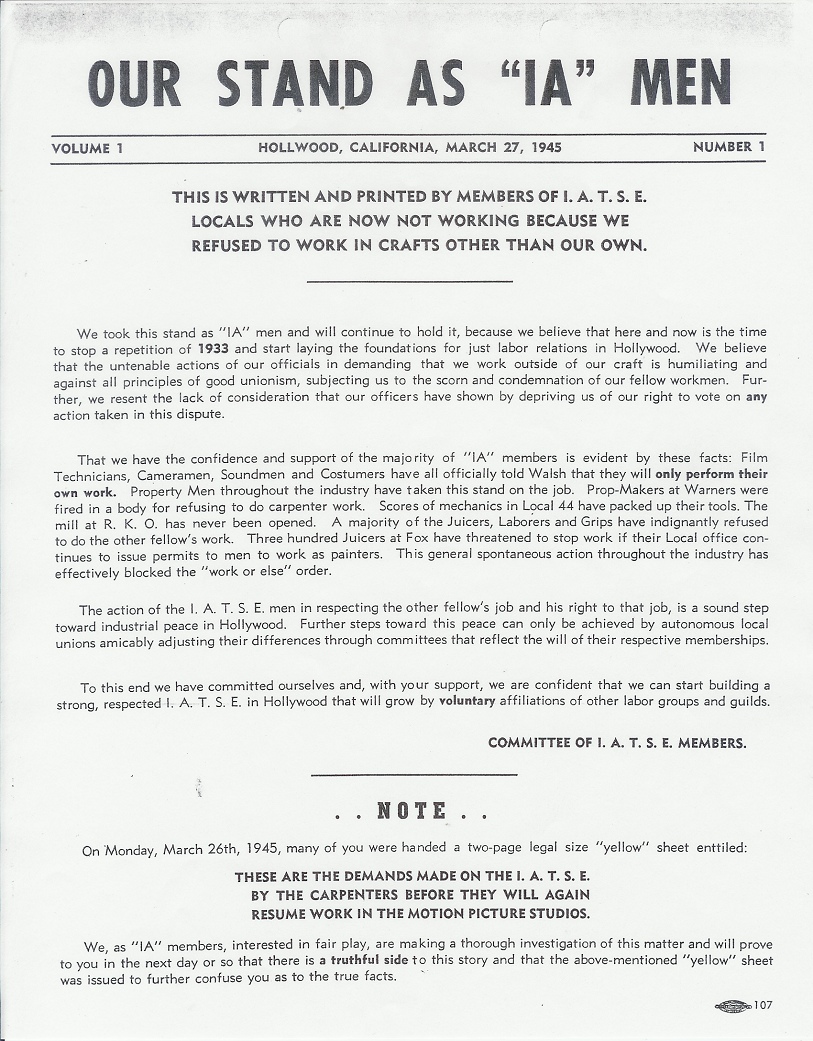Ten years ago this weekend, I was working as a stagehand apprentice at the Walnut Street Theatre in Philadelphia. I’ve gathered some news stories about how fellow technical theatre and film employees stepped in and helped out on September 11th and its aftermath. If you know of any others, leave a comment or drop me an email.
IATSE Local 52 Volunteer Their Expertise To Rescue Efforts in New York
Local 52 is coordinating with New York-based Production Houses that are providing generators and back-up equipment at no charge. Studio Mechanics are working voluntarily (at no compensation) around the clock manning spot lights, flood lights, torches and mechanical cutters to cut through the steel, concrete and other debris in efforts to rescue those who may be trapped in the rubble.
September 11: The Industry Pitches In
On the afternoon of Tuesday, September 11, Musco Lighting received a call from the NYPD requesting the use of its mobile lighting trucks.
…
Another story of people in our industry pitching in comes from Charlie Libin, a DP/grip who, along with David Skutch of Luminaria Ltd., have been volunteering to help with the lighting at the World Trade Center site.
…
“On Wednesday, the city wanted to use Pier 94 as a morgue and asked us to put up drapes and lights to create a welcoming place for the families,†explains Longert. “On Thursday they changed their minds and asked us to help in the construction of the Family Assistance Center.”
…
“In five minutes the Local 52 crew and I got it up and running.†With some supplemental lighting from the Law & Order lighting package, they turned a darkened sound stage into a makeshift hospital.
IATSE Donates $50,000 To New York State World Trade Center Relief Fund
In the wake of the horrific events at the World Trade Center in New York City, the Pentagon in Washington, D. C. and in Pennsylvania, the IATSE has donated $50,000 to the New York State World Trade Center Relief Fund, it was announced by Thomas C. Short, President of the International Union. These monies are intended to aid the relief efforts of the New York State and City emergency response, Short added.
In an effort to keep legitimate theater productions on Broadway lit, New York locals and the IATSE have jointly agreed to a 25% wage reduction for a four week period, it was announced by Thomas C. Short, President of the International. This decrease came in response to the economic chaos created by the recent attack on the city. As a result, five major productions including Chicago, Full Monty, Les Miserables, Phantom of the Opera and Rent, are threatened with closing unless substantial economic relief can be found.
Monona Rossol is well-known to many in the technical theater community. She has been working for decades to make our theatres safer, and many of us have attended her seminars over the years, which is usually the first time we hear about how hazardous all the materials we work with are. She was also one of the first to speak out about how toxic the air around Ground Zero was. In this interview at Green Theater Initiative, she says:
I live on Thompson right near Houston, and when the wind shifted on September 11th and all that dust and odor drifted uptown, I had my first ever asthma attack. They were announcing on the radio that the air was fine, and I said, “I don’t think so!†Any common-sense chemist knows that you cannot grind 16 acres of buildings into dust, with all of their computers, plastics, asbestos, fiberglass, and metals, and tell people the air is okay. So I formed an alliance with the New York Environmental Law and Justice Project, and their lawyer, Joel Kupferman. I told him how to take samples and create a chain of custody to the lab; and we had our own samples analyzed. I did a radio broadcast on the 17th of September on PBS saying, essentially, “Are they crazy? This air is horrendous and people should not be cleaning up this dust on their own.†We did our first joint press release on September 22nd, making us the first people to speak out, and that was just because no one else did it.
You can read Comments on Exposure and Human Health Evaluation of Airborne Pollution from the World Trade Center Disaster, co-written by Rossol, as well as the the report on The Public Health Fallout from September 11, published by the New York Environmental Law & Justice Project.

